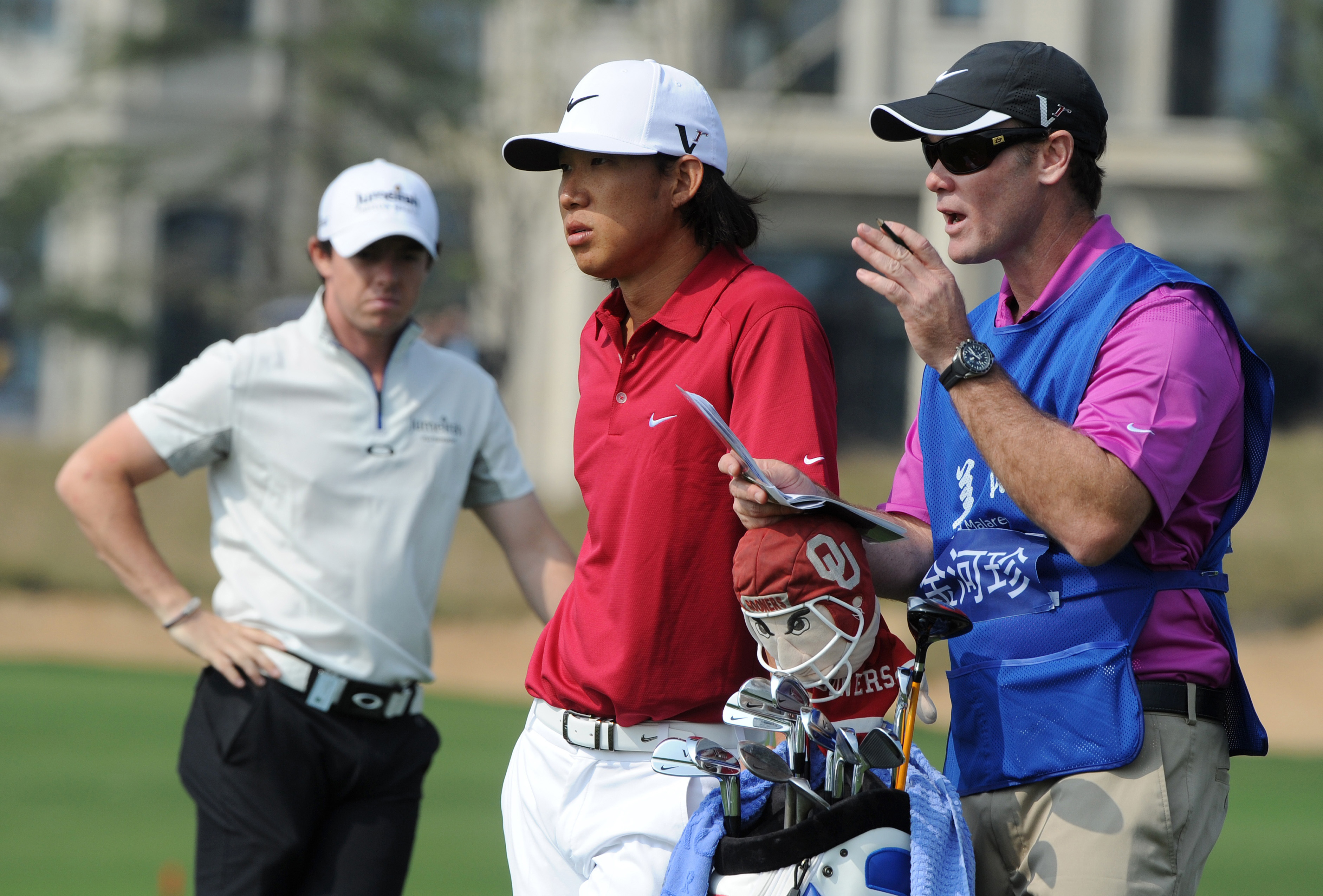As the cockiest among the PGA Tour’s young flat-brimmers back in the noughties, Anthony Kim has long been venerated by aging millennial bros as the apostolic leader of golf cool, but as with most cults, the enthusiasm for a second coming says less about the promise of the savior than the desperation of those wishing to be saved.
The enduring fan fascination with Kim is understandable. In a sport where even lifeless journeymen plow the furrow well into dotage, he was a brash and captivating personality who walked away at age 26 — not to the broadcasting booth or the corporate speaking circuit, just away. His last competitive round was Thursday, May 3, 2012, a 74 in the opening round of the Wells Fargo Championship in Charlotte, N.C., where he’d won his first Tour event four years earlier. He’d been living hard, had lost a big sponsor and was close to losing his card.
“This was the start of my career,” Kim said that week. “Hopefully, I can start a new one here.”
Instead, he withdrew citing wrist and thumb pain and hasn’t competed since. He’s rarely even been seen, the few sightings of him posted to social media being analyzed with an intensity worthy of the Zapruder film.
Kim’s lengthy absence reportedly owes to a lucrative insurance payout for career-ending injuries, compensation that could be jeopardized if he returns to competition. If a rumored comeback happens on the PGA Tour, it would suggest his old confidence is intact, since out there money and status is hard-earned. Signing with LIV Golf, on the other hand, is more plausible and would be a slick arbitrage, the quality of his play being irrelevant to the rewards he’d receive and with guaranteed money far in excess of any insurance clawback. He may even think he can beat a handful of Greg Norman’s finest.
In lieu of results, the cult of Anthony Kim took over. A dozen years of applying Vaseline to the critical lens has obscured the reality that his prime was as brief as it is distant: three wins, three top 10 finishes in 15 major starts, one standout Ryder Cup. Revisiting performance statistics from his injury-free period suggests that Kim’s greatest weapon was his confidence, and how much of that can we reasonably expect now? Discount the messianic cult and you’ve got a 38-year-old with three wins and a bit of moxie.
He’s Scott Stallings, except that we actually know Stallings still has game.

Anthony Kim watches his tee shot on the 13th hole during the second round of the Masters.
Two things have sustained the Kim cult for a dozen years: an unshakeable belief among a subset of fans that he would have accomplished much more in his career, and the convenient fact that he hasn’t returned to test that belief. Among his peers, mild interest remains. “I’d be interested in watching Anthony Kim play golf for about five minutes,” one Tour veteran wrote in a group text Thursday evening.
“Four more than me,” another player responded.
Beyond fans who genuinely want to see what he has in the tank, the constituency most thirsty for a Kim comeback is parasitic industry executives — those hoping to skim a percentage of any deal and those urgently in need of eyeballs on a failed product. A deal between LIV and Kim would be hailed as genius marketing by those who splash in shallow waters, but it would more accurately expose a tour reliant on gimmickry.
Signing Jon Rahm signals what LIV Golf aspires to be. Signing Anthony Kim would illustrate what it is.
When Kim last played a professional event, Jordan Spieth was an amateur with a robust hairline and Nick Dunlap was playing peewee games. In 2014, it was reported that Kim was no longer even playing recreational golf. During a random fan encounter five years ago, he described his golf game as “non-existent.” Broken down, washed up, cashing in. Kim would check every box, so it’s unsurprising that LIV sees a potential asset.
Should Kim attempt a comeback, an analogous story of sorts can be found in the career of Bjorn Borg. Burned out, he quit tennis at age 25 after losing the 1981 U.S. Open final to John McEnroe (he was already in a car to the airport by the time Mac was handed the trophy). A decade later, a period longer than most professional careers last, Borg decided to return, armed with not much more than a wooden racquet and a reputation. The results were abysmal and served only to add a glumly prosaic section to the once-outstanding résumé earned in his first coming.
Kim is no Borg, in accomplishment or stature, but there’s a lesson there. No matter how much talent once existed, sporting comebacks after long absences are considerably less likely to be an exciting new chapter than a passing, disappointing curiosity.

